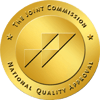In the News
AS THE ECONOMY FREE FALLS AND MENTAL HEALTH SPIRALS, BOTH REHABS AND ADDICTS TRY TO HOLD ON
MEL Magazine: Written by C.Brian Smith
Though many treatment centers report being filled to the brim, the economic impact of the global pandemic will mean fewer rehabs can afford to stay open — and more addicts in need
Bailey works at the only substance abuse treatment facility that’s still open within a 100-mile radius of her home in Long Island. Most rehabs in the area have stopped admitting new patients during the pandemic because they can’t comply with mandated health recommendations from the Centers for Disease Control and Prevention and the New York Department of Health, so they’ve had to close their doors — some temporarily, others likely for good.
“Overall, it’s an extremely scary time to be a newcomer in recovery,” Bailey tells me, using a pseudonym due to confidentiality concerns. Patients aren’t being given typical discharge plans because most outpatient facilities in COVID-19 hotspots are closed, too. Online therapy sessions (i.e., “telehealth”) are available, but many in early recovery are unwilling to confide in strangers over the internet. Urine analysis is likewise unavailable, which means no accountability, and for patients who are on probation or parole, district courts are closed. Meanwhile, sober living homes, the go-to step down from formal substance abuse treatment programs, are leery about accepting new residents and require a negative COVID-19 test (good luck finding one) and two weeks of isolation. “For many of my patients, especially those who are introverted, recovery currently feels impossible,” Bailey continues.
As such, the pandemic is proving to be an existential threat for thousands of treatment centers nationwide, a third of which may close this year according to Marvin Ventrell, CEO of the National Association of Addiction Treatment Providers. “Even if they’re not closing, their census, as we call admission rates in the business, is compromised,” he tells me. “Treatment centers operate on a really tight margin and really can’t take a spontaneous hit like this.”
Nonprofit facilities like Austin Recovery Network in Texas, Austin’s oldest provider of addiction treatment for adult men, women, pregnant women and parents with small children, will be suspending its residential inpatient and outpatient programming, effective May 15th. “The need for affordable residential and outpatient treatment programs is as great as ever, with accidental overdose having become the number one cause of death for people under 50,” writes Lynn Sherman, Austin Recovery Network’s board chair, in an email. “But fiscal deficits have left the organization with insufficient resources to outlast the COVID-19 pandemic.”
Austin Recovery has always been a quality program for lower socioeconomic groups, says William C. Moyers, vice president of public affairs and community relations for the Hazelden Betty Ford Foundation in Minnesota, who calls the shuttering a “tragedy of the pandemic.” On the other hand, he adds, it reflects the fact that in stressful, difficult times, “only those programs that are financially viable and technically adept are going to make it.” For destination treatment centers like Asana Recovery in Newport Beach, California, new admissions have essentially ceased. “Eighty percent of our clients fly in from across the country,” explains CEO Mark Shandrow, who says that a majority of Asana’s bookings have canceled. “On the flip side, no one wants to leave, so a lot of people have just stayed.”
COVID-19 is forcing many small businesses to permanently close, and while it’s undeniably sad to watch a beloved local deli suffer an untimely death, the passing of rehab centers in rural areas may be life-threatening, says Brook McKenzie, clinical outreach director of New Method Wellness in Orange County, California. “When people try to access those resources a month from now, two months from now, even two weeks from now, there will be fewer beds to serve that population,” he tells me.
Programs like Austin Recovery are more financially accessible than others, so when they go out of business, it’s a “major blow” to a population in need, McKenzie says. What’s more, he adds, with addiction being a shame-based disease, people often resist seeking treatment to begin with. “A pandemic like this can provide a valid excuse to do something about this next week, or next month. We never want to lose someone based on the need to wait a month, because unfortunately that likely won’t happen. It’s very sad.”
To that point, Bob Poznanovich, vice president of business development at Hazelden Betty Ford, recently had a call with a late-stage heroin user who felt it was riskier to fly to treatment than continue using heroin. Poznanovich, however, questions this logic: “I’d much rather take my chances on a plane that had been cleaned multiple times than using drugs I found on the street in a time like this. But this person’s willingness to use was greater than their willingness to recover.”
It’s not all bad news, though, as many are yearning for recovery during the pandemic, too. Along those lines, of the 20 substance abuse centers I spoke with, more than half have seen an increase in people seeking treatment over the last six weeks. Lyndsay, a 33-year-old recovering drug addict in Texas, is among them. As she puts it, what she was doing prior to rehab was “far more dangerous” than coronavirus. Once Lyndsay, a video game QA analyst, learned that everything on the outside was on lockdown, she knew she’d made the right decision to get help when she did. “It made my time off from work have less of an impact because everyone was working from home, so productivity decreased across the board.”
“There isn’t a better opportunity in the history of your using to get help,” confirms Corey Richman, vice president of admissions at A Better Life Recovery for young adult men in Southern California. “Conversations I’m having with clients sound like this: ‘Call it divine intervention, but this pandemic has presented you with an opportunity. It’s not going to hold your life back; rather, it’s going to propel you forward when everything is said and done.’”
Maei, a 26-year-old in New Jersey who’s currently in rehab for alcohol abuse, agrees. “It’s hard to cope when you feel like life is going on without you, which is ridiculous because when I used, I missed everything. It’s way easier to be in rehab now because nothing’s going on in the outside world; so it’s a perfect time to work on yourself. It’s also safer because you’re less at risk to catch the virus.”
Along those lines, many rehab facilities are specifically designed to give residents extra space. Take, for example, SUWS of the Carolinas: Wilderness & Adventure Treatment for Troubled Teens, which has seen a significant uptick in admissions according to Executive Director Daniel Fishburn. “There’s a lot more interest in parents sending their kids to a place like ours during the pandemic because they’re outdoors exercising and social distancing,” he explains. “We have several kids whose parents said, ‘We’re in Manhattan, and my kid is running around and hanging out with people we don’t know.’ They’re worried about the safety of their family. We also have parents wanting their kids to stay longer with us because it’s not really safe for them to go home.”
Likewise leaning into the safety and serenity of open spaces is Soberman’s Estate, a residential men’s treatment center in Arizona, which provides discreet, individualized recovery and wellness services for men hoping to recover from substance abuse disorder. Soberman’s Estate provides “extreme social distancing,” admitting only five clients at a time during the pandemic on a five-acre property, complete with a giant equestrian center where residents can ride horses on thousands of acres of pristine Sonoran Desert and not come into contact with anyone.
To accommodate clients wishing to avoid air travel during the pandemic, a Soberman’s Estate driver picks them up anywhere within a day’s drive, in a car of the client’s choosing (some insist on a large SUV, others are cool with the estate’s Jaguar.) When I speak with founder Mitchell T. Prager, he’s just led a “Commencement Stone Ceremony,” marking three residents’ completion of a 35-day stay at the facility. Each of the men explained that they had been thinking about seeking treatment for months, but that it was the pandemic that pushed them over the edge. “The isolation of being at home, combined with the anxiety, depression and stress that we’re all experiencing is what made them pick up the phone,” Prager tells me.
Quarantine isolation is hitting alcoholics particularly hard, explains Alexandra Helfer, chief clinical officer at Mountainside Treatment Center in Connecticut. According to data from Nielsen, online alcohol sales increased by nearly 400 percent during the week ending on April 11th, compared to the same period in 2019. “They’re sitting at home with nothing to do,” Helfer says. “I’ve taken calls from a lot of people who were never active alcoholics prior to the pandemic, but are now concerned they need detox because of the amount they’re drinking.”
Marvin D. Seppala, chief medical officer at Hazelden Betty Ford, says people working from home are suddenly drinking during the day, something they’ve never done in the past. One survey conducted by Fishbowl, a social network for employees, found that 42 percent of nearly 13,000 workers were drinking on the clock at home. “Advertising and marketing agency employees had the highest percentage of employees answering with ‘Yes,’ with 49.14 percent,” Fishbowl reported.
Unsurprisingly, those on the front lines of the pandemic are flooding into residential treatment in droves as well. Lorna M. Breen, the 49-year-old medical director of New York-Presbyterian Allen Hospital’s emergency department, committed suicide earlier this month, as did rookie Bronx EMT John Mondello, who used a gun registered to his father, a retired NYPD cop, to end his life. True Recovery in Southern California includes a standalone, first-responders-only, trauma-focused program for cops, firemen, 911 operators and ER personnel and has seen a “significant” influx in admissions. “A lot of [the first responders] have been put on self-quarantine after being exposed to the virus,” explains CEO Joel Edwards. “So they’re home for two weeks and realize, ‘Wow, I guess now is probably the time I should get this thing addressed.’”
For True Recovery’s traditional clients, prior to the pandemic, Edwards says most admissions calls came from people seeking help for themselves. But there’s been a large, large bump in calls from concerned parents and/or spouses. “Toward the end of every year, people go home for Thanksgiving and families think, Oh my gosh, what’s going on with Joel? Christmas comes around and Joel hasn’t gotten any better, so January is when we see a rush of admissions. We’re starting to see the same thing with quarantine, as secrets are exposed and families are forcing the issue on their loved ones to get help.”





